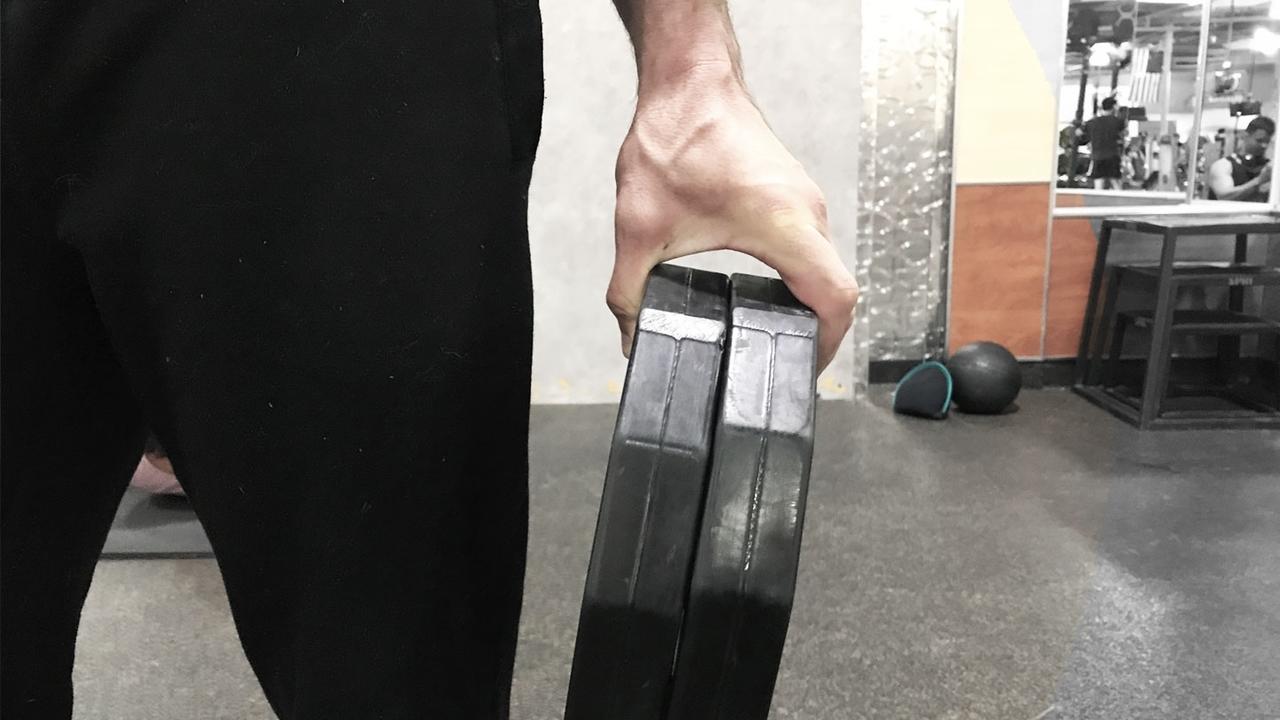How to Improve Grip Strength to Optimize Training

By Joey Wilson
Grip Strength and Overall Strength go Hand in Hand, Literally. You can have the biggest, strongest chest, back, shoulders, legs, etc., but if you grip is weak, you’re going to be at a huge disadvantage. Why? Because you are only as strong as your weakest link. For most people, that is their grip. Your hands and wrists are usually the first things to give out when performing any kind of exercise that involves your hands. And that is most exercises. For most wrestlers and other types of grapplers, it should be obvious that grip strength and endurance plays a big role in performance. You’ll have a hard time in these sports if your grip is either weak or wears out quickly. However, when it comes to strength and conditioning, grip is often ignored or underemphasized. Improving hand and wrist strength is not only beneficial for sport, it can have a huge impact on your ability to perform strength exercises and get the most out of your training.
There are essentially 3 main variables that play a part in building strength:
- Time under tension
- Number of reps
- Weight
Better grip endurance means you can hold onto a bar, weight, bag, etc for longer, which means more reps and more time under tension. If you’re stopping your workouts short because you can’t hold on anymore, you probably won’t be getting the full muscle fatigue necessary to see the results you want. By improving grip strength, you improve your stability and can literally hold on to heavier things. This is most clearly illustrated by powerlifters or bodybuilders who use wrist straps for heavy weights. The reason is very simply: if you can hold on to heavy things, you can move heavy things. However, there are no wrist straps in wrestling, and no one cares how much you can deadlift if your grip is too weak to pick a human up off the mat and throw them. Moral of the story: stronger grip equals more time under tension, more reps, and more weight. And that means more overall strength.
Often times, people will assume that they are not strong enough for a particular exercise when, in fact, it's their grip that’s holding them back. This became very clear to me when I was trying to get better at doing handstands without walking my hands. I knew that I was strong enough to hold myself up because I could walk across a wrestling mat on my hands, and hold a handstand on a wall for a while, but I kept falling after about 10 seconds when I tried to stay still. I’m not sure how I figured it out, but one day I started really focusing on pressing my hands into the ground, even curling my fingers slightly. Not only did I hold the stand longer, my hands and forearms were really sore the next day. Bingo. In this case, I didn’t do any special wrist or grip exercises, I simply focused on engaging those muscles, and “squeezing” the ground as hard as possible. After a few weeks, I could hold my handstands much longer, and my wrists stopped getting sore. Now I was training the entire chain of muscles from my hands to my core evenly, instead of just my weak link.
Ok, so we’ve established that strong hands are cool. Good. Now what? Well, it turns out there are three different kinds of grip: crush grip, pinch grip, and support grip. I’ll review the different types, and give you some basic exercises and tips to get started training all of them.
- Crush Grip: This is the grip between your fingers and your palm. Basically any time your grab an object and squeeze, you are using crushing grip. Examples: grabbing a wrist, crushing a soda can.
- Pinch Grip: pinching is action of holding and squeezing an object with only the tips of your thumb and fingers.
- Support Grip: the ability to maintain a hold onto an object for an extended period. Think hanging from a bar, or a long walk across the parking lot with bags full of groceries.
- Bonus: hand extension.As with any exercise, it’s important to train the complementary and opposite movements to keep things balanced. Doing hand extension exercises can improve overall grip and help prevent overuse injuries.

